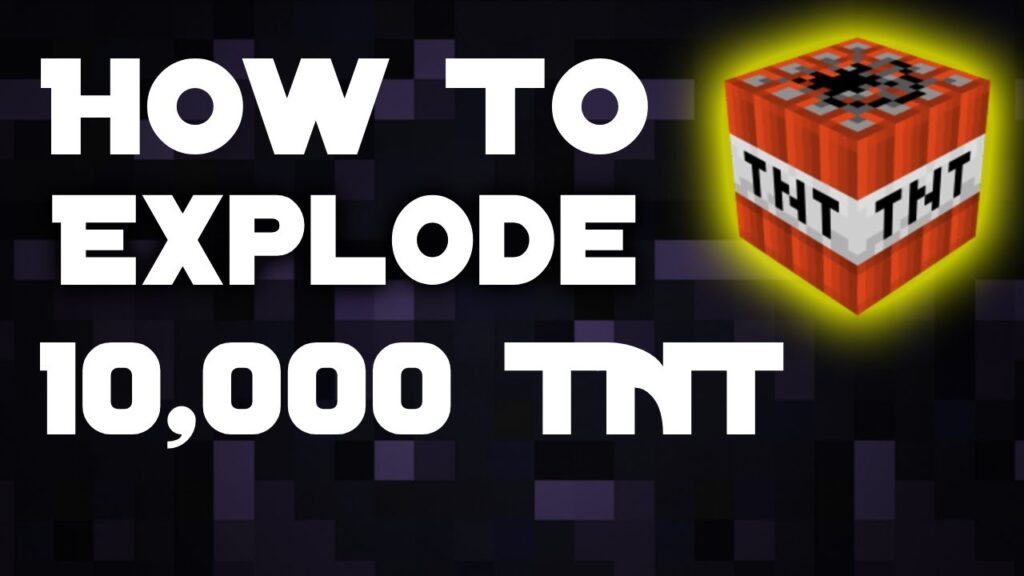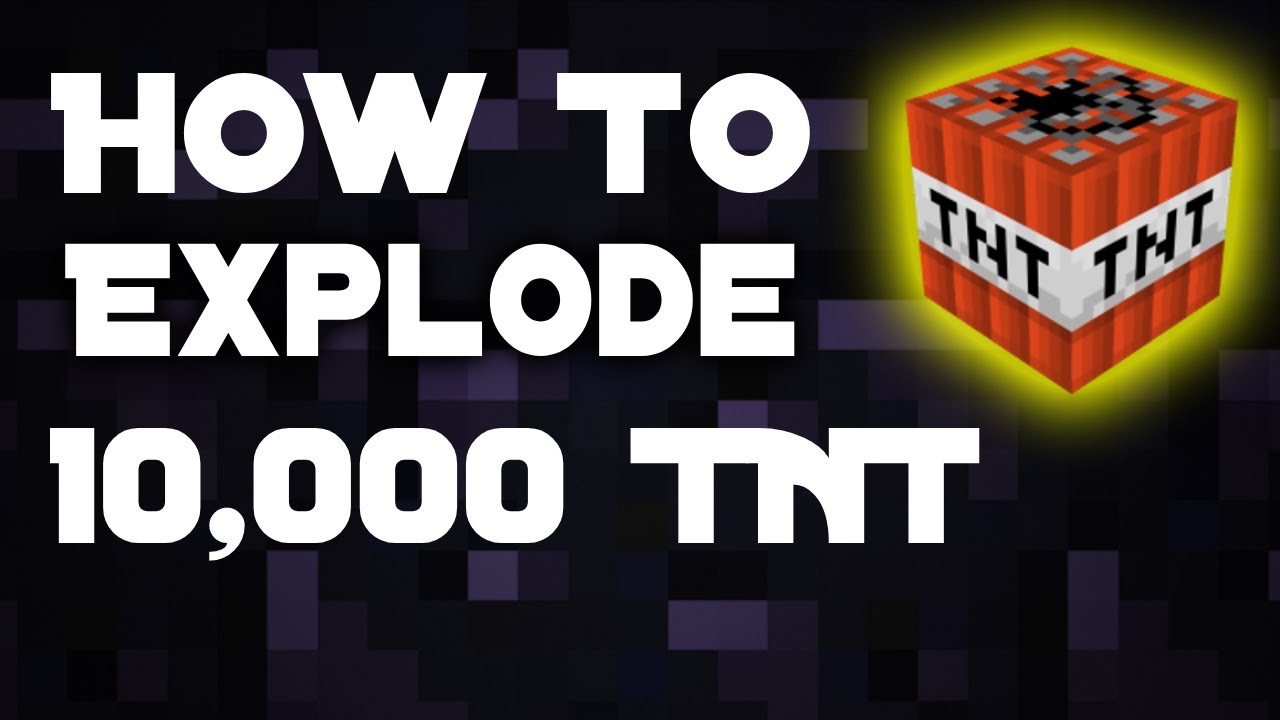
How Many Blocks Does TNT Fall Before Exploding? A Comprehensive Guide
The question of how many blocks does TNT fall before exploding in Minecraft and similar games is a surprisingly complex one. While the immediate answer might seem straightforward, several factors influence the behavior of TNT, making the actual distance it falls before detonation variable. This article aims to provide a comprehensive understanding of TNT mechanics, exploring the conditions that dictate its fall and explosion, and debunking common misconceptions along the way.
Understanding TNT Mechanics
Before diving into the specifics of fall distance, it’s essential to understand the fundamental mechanics of TNT in Minecraft. TNT, or Trinitrotoluene, is a block that, when activated, undergoes a countdown before exploding. Activation can occur through various means, including redstone signals, fire, or direct interaction with the player. Once activated, the TNT block will begin to flash and emit light, indicating its impending explosion.
The default fuse time for TNT is 4 seconds, which translates to 80 game ticks (20 ticks per second). During this fuse time, the TNT block is subject to gravity and will fall if there is no solid block beneath it. This is where the question of how many blocks does TNT fall before exploding becomes relevant. The number of blocks it falls depends on how quickly the fuse burns relative to its descent.
Factors Influencing Fall Distance
Fuse Time
The fuse time is the most critical factor. As mentioned, the default is 4 seconds. However, this can be altered through various game mechanics or mods. A longer fuse time allows the TNT to fall further, while a shorter fuse time reduces the fall distance. The game’s tick rate also plays a role; a slower tick rate extends the real-world time of the fuse, allowing for a longer fall.
Game Physics and Tick Rate
Minecraft’s physics engine determines how quickly blocks fall. The standard falling speed for blocks like sand, gravel, and TNT is approximately 3 blocks per second. However, this can fluctuate slightly based on server performance and lag. A slower server tick rate can cause blocks to fall more slowly, while a faster tick rate can increase the falling speed. This variance directly impacts how many blocks does TNT fall before exploding.
External Influences
External influences such as water or slime blocks can significantly alter the behavior of falling TNT. Water slows the descent of TNT, allowing for a longer fuse time relative to its downward movement. Slime blocks can cause TNT to bounce, adding complexity to its trajectory and potentially altering the explosion’s impact. These environmental factors make it difficult to predict precisely how many blocks does TNT fall before exploding in every situation.
Calculating the Approximate Fall Distance
Given the standard fuse time of 4 seconds and a falling speed of 3 blocks per second, a TNT block will typically fall around 12 blocks before exploding. This is a rough estimate, and the actual distance can vary based on the factors mentioned above. For a more precise calculation, one would need to account for server tick rate, potential lag, and any environmental influences affecting the TNT’s descent.
To illustrate, consider a scenario where the server is experiencing significant lag, reducing the falling speed to 2 blocks per second. In this case, the TNT would only fall approximately 8 blocks before exploding. Conversely, if the server is running smoothly with a slightly increased tick rate, the falling speed might increase to 3.5 blocks per second, resulting in a fall distance of around 14 blocks.
Common Misconceptions
One common misconception is that TNT always explodes upon hitting the ground. This is not true. TNT explodes based on its fuse time, not its impact with a surface. While impact can sometimes trigger an explosion, this is usually due to a glitch or unintended interaction with another block. The primary determinant of when TNT explodes is the countdown initiated upon activation. Another common question is: how many blocks does TNT fall before exploding?
Another misconception is that the type of block beneath the TNT affects its explosion. The type of block beneath the TNT does not affect when it explodes or the power of the explosion. The fuse time and the surrounding environment are the primary factors. Some players believe that placing TNT on obsidian or bedrock will somehow alter its behavior, but this is not the case.
Practical Applications and Experiments
Understanding how many blocks does TNT fall before exploding has practical applications in Minecraft gameplay. For example, in TNT cannons, the precise timing and fall distance of TNT are crucial for achieving maximum range and accuracy. By carefully controlling the fuse time and launch angle, players can fine-tune their cannons to target specific locations with devastating effect.
Experiments can be conducted to further explore the relationship between fall distance and explosion timing. By setting up controlled environments and varying the fuse time, players can gather empirical data on how many blocks does TNT fall before exploding under different conditions. These experiments can help refine strategies for using TNT in both offensive and defensive applications.
Experiment Setup
To conduct these experiments, you’ll need a few basic resources: TNT blocks, a redstone source (such as a lever or button), and a clear vertical space to observe the TNT’s descent. It’s also helpful to have a measuring system in place, such as placing blocks at regular intervals along the fall path, to accurately determine the fall distance.
Experiment Procedure
Start by activating the TNT and observing its fall. Record the number of blocks it falls before exploding. Repeat this process multiple times to account for any variations in server performance. Next, modify the fuse time using command blocks or mods and repeat the experiment. Compare the results to see how changes in fuse time affect the fall distance.
Advanced Techniques and Considerations
For advanced users, there are several techniques and considerations to keep in mind when working with TNT. One such technique is the use of TNT dupers, which exploit glitches in the game to create multiple TNT blocks from a single activated block. These dupers can be used to create massive explosions or to supply TNT for large-scale construction projects.
Another consideration is the optimization of TNT explosions for specific purposes. For example, in mining operations, players may want to maximize the efficiency of TNT explosions to clear large areas quickly. This can be achieved by strategically placing TNT blocks and timing their detonations to create a chain reaction.
Furthermore, understanding the mechanics of TNT can be crucial in designing traps and defenses. By carefully controlling the timing and placement of TNT, players can create traps that are both effective and difficult to detect. These traps can be used to protect valuable resources or to deter unwanted visitors from entering a base.
Conclusion
In summary, the question of how many blocks does TNT fall before exploding is influenced by a combination of factors, including fuse time, game physics, and external influences. While a rough estimate of 12 blocks can be used as a starting point, the actual distance can vary significantly based on the specific conditions. By understanding these factors and conducting experiments, players can gain a deeper appreciation for the complexities of TNT mechanics and apply this knowledge to their gameplay. Ultimately, mastering TNT requires a combination of theoretical knowledge and practical experimentation, allowing players to harness its destructive power for a variety of purposes.
So, next time you’re setting up a TNT cannon or clearing a large area for construction, remember that the seemingly simple question of how many blocks does TNT fall before exploding has a nuanced answer that can significantly impact your success. Happy experimenting!
[See also: Minecraft Redstone Guide]
[See also: Best Minecraft TNT Cannon Designs]
[See also: Understanding Minecraft Explosions]

